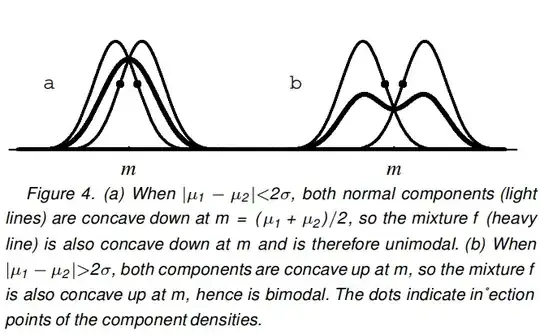Under mixture of two normal distributions:
https://en.wikipedia.org/wiki/Multimodal_distribution#Mixture_of_two_normal_distributions
"A mixture of two normal distributions has five parameters to estimate: the two means, the two variances and the mixing parameter. A mixture of two normal distributions with equal standard deviations is bimodal only if their means differ by at least twice the common standard deviation."
I am looking for a derivation or intuitive explanation as to why this is true. I believe it may be able to be explained in the form of a two sample t test:
$$\frac{\mu_1-\mu_2}{\sigma_p}$$
where $\sigma_p$ is the pooled standard deviation.

